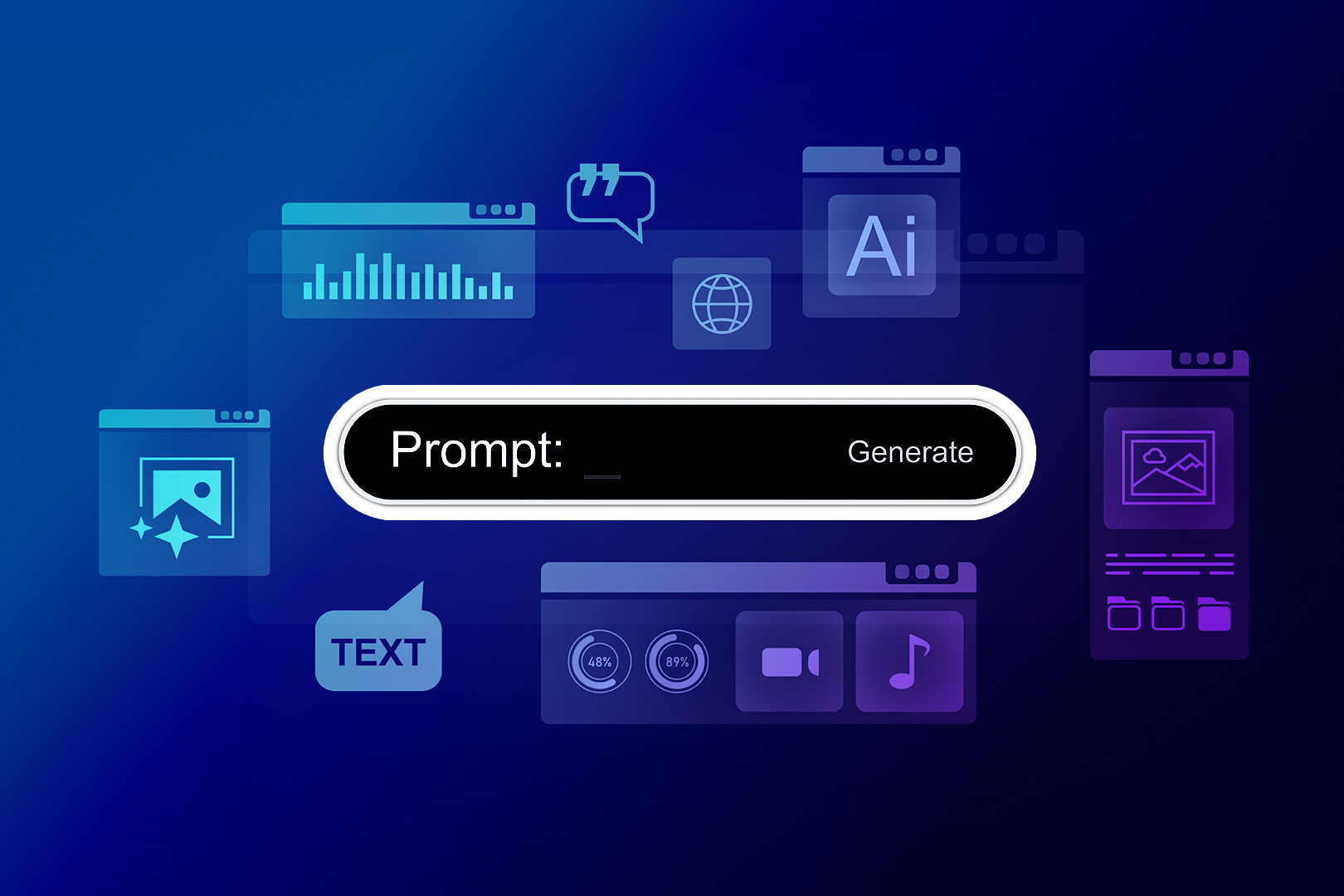
This Is Your Life with Voice AI: Meet Your New Robot Co-Worker
It’s 7:45 a.m. You’re half-awake and have to wait for that coffee finishes brewing. You sit down, dreading the day of work ahead of you. When you finally drop in front of the screen, there’s a pleasant surprise:
Your Voice AI teammate is already at work.
40 calls: made. Potential leads to follow up on: flagged and ready within your CRM.
It may sound like some scenario out of a sci-fi movie predicting the world of sales in 2045, but nope. It’s this year. With AI Voice agents, your software can handle early sales conversations and busywork before human SDRs even open their laptops.
So what’s the deal with AI voice agents? How far along is the technology, and how can they work alongside a sales team like yours? Here’s how to use them to get the most meaningful time savings—and which parts of your sales process you can continue to reserve for human beings who still need coffee.
Meet Your New Coworker: The Voice AI That Starts Before You Do
Voice AI is a technology that enables the processing of audio workflows. In other words, it can go through 20 phone calls, summarize your sales transcripts into a report, analyze each lead's sentiment, tag the highest-priority prospects, and hand them off to you.
That’s when you can swoop in and complete the face-to-face (or voice-to-voice) phase of the sales process.
Maybe you’re used to more passive AI tools that can only summarize large swaths of text. But for sales teams, Voice AI feels more proactive. Consider all you can do with technology that functions more like AI SDRs:
- Make calls on your behalf, including asking key questions of your leads so you can determine their top objections. AI can also record their responses so you understand their overall sentiment.
- Auto-summarize conversations, so you can quickly review calls without listening to entire audio files.
- Push notes into your CRM. AI can also drop summaries into the CRM workflows you’ve already built into your sales process. That’s what makes the scenario we just constructed in the previous section so realistic: these summaries can be waiting for you the minute you log in for the day.
- Flag potential opportunities and prioritize which leads are most “ready to buy” based on sentiment. This lets you focus your human-to-human time on the sales most likely to close today.
AI this advanced is no longer the exclusive realm of sci-fi. Things are moving quickly. According to McKinsey’s State of AI in 2025 Report, 88% of respondents routinely use AI in one business function, a leap of 10% from just a year ago.
HubSpot pointed out that over two-thirds of businesses already consider Voice AI part of their core business. 84% plan to increase their Voice AI budgets in the next 12 months.
On one hand, you might find all of this disturbing. Voice AI is replacing tasks that sales reps once handled. This is beyond ChatGPT roleplaying a sales call and prepping you for it. This is a step beyond.
But we recommend shifting your focus. The AI Voice agent can now handle things that you:
1. Might not have wanted to do, or
2. Used to procrastinate on because it filled you with fear and anxiety.
After all, no one likes to pick up the phone and risk rejection.
Thanks to Voice AI agents, you have a lighter cognitive load. You’re not ruminating all morning on that tough call you have to make. Instead, Voice AI is making it possible for you to handle more of what counts. Meanwhile, the AI is happy to take the temperature of buyer sentiment and handle data entry, landing you insights without all that friction and hassle.
In other words, you’re not constantly trying to work your sales process into a groove. You can simply log in, see what Voice AI achieved for you in the past few days, and get to work.
But what’s actually changing in sales because of this technology? And what still depends on having a human-to-human conversation? Let’s dive deeper.
What’s Actually Changing (and What Isn’t)
First things first: the capabilities of Voice AI are new. No one knows completely how this may change everything.
However, we can examine a few existing trends and then extrapolate.
McKinsey reports that “The most successful B2B players are leveraging technology in five key ways to rewire their approach to growth and outgrow their peers.” At the top of that list: AI-powered opportunity identification. In other words, B2B companies are using AI to find places to grow.
That used to be sales rep work: look for new prospects, make a few calls and get their temperature, then report back with the results. This was a painful process. It meant exposing yourself to a lot of potential rejection.
But sales teams that use Voice AI can shift from manual workflows to AI-supported pipelines. And with Voice AI, these pipelines can automatically prioritize warm leads until they’re ready to speak to your rep.
This is leading to tangible results. ContactPoint360 used speech analytics and Voice AI to increase its average sales per hour by 17%. How? It updated its outdated “QA mechanism,” using Voice AI to increase how many calls it could make to evaluate sentiment and increase its outbound efficiency. Less pain, more sales. Just as Voice AI is intended to work.
How Voice AI Frees Sales Teams to Sell Again
If sales is a relay race, Voice AI is the runner out front. It can warm up the process, then hand you the baton. Gartner projects that by 2027, 90% of seller research workflows will begin with AI. And 95% of seller research workflows will begin with AI.
For some perspective, that number was just 20% in 2024.
Voice AI is especially helpful because it takes away the high-friction work that even the most extroverted SD might dread. It can call up a potential customer and find out their current pain points. It can take their buying temperature. It can even jot down notes and give you a “buyer sentiment” temperature reading, dropping it right into your AI-integrated CRM.
That kind of work wasn’t always fun in the past. It meant you were the one doing the calls—and taking all the risks.
Even if you start your Voice AI with lower-priority tasks, it can handle some basic tasks like follow-up calls or simply reading customer sentiment. Let it fill your CRM with common objections so that by the time you’re talking to a potential customer, you know exactly what they want to hear.
The key: Voice AI is another way technology is taking our least-favorite tasks, outsourcing them, and making your life as an SDR more pleasant.
Using Voice AI to Increase the Human Touch
Reading all of the above, any self-respecting SDR might think: “Wait. Where am I in all this?”
You’re still present at the most critical points in the sale. B2B sales still requires that businesses connect on a human basis. And if you’re building a trusted connection with another business, Voice AI isn’t going to replace that—no matter how sophisticated it gets.
Right now, you’re simply using Voice AI to improve your ability to read sentiment and establish an outbound workflow.
In fact, there’s no better time to use this to your advantage. You’ll have an instant time-saving advantage over anyone else who refuses to use Voice AI. McKinsey sees that companies using AI in sales are saving 40-60% in their lead qualification and scheduling processes.
Once a prospect is ready for the sale, your human reps can then step in. They’ll have more information to work from, too. They’ll understand buyer sentiment. They’ll log into your CRM and dial up the pain points and objections they need to review.
Meanwhile, human reps can still do what humans are best at: reading the room and building genuine connections between businesses.
Let Voice AI get the high-friction stuff out of the way. Human judgment can oversee it all, condense it into the essential next steps, and then close the deal.
Making your new Voice AI “co-worker” fit into your sales processes
The idea of an AI co-worker shouldn’t freak you out. It’s really a tool. It won’t replace humans totally, but it will replace those tasks that once filled you with dread.
Hand those tasks off to AI, and you can see yourself in the scenario with which we kicked off this post. You’ll be able to read up on customer sentiment and objections before that morning coffee is ready. The only question is: what will you do with all this new time you have?
Curious as to how a new “co-worker” like this can fit your sales process? Or where it might belong in your workflow?
Start a free trial of Close and start to see how you can start integrating AI into your team’s workday.











